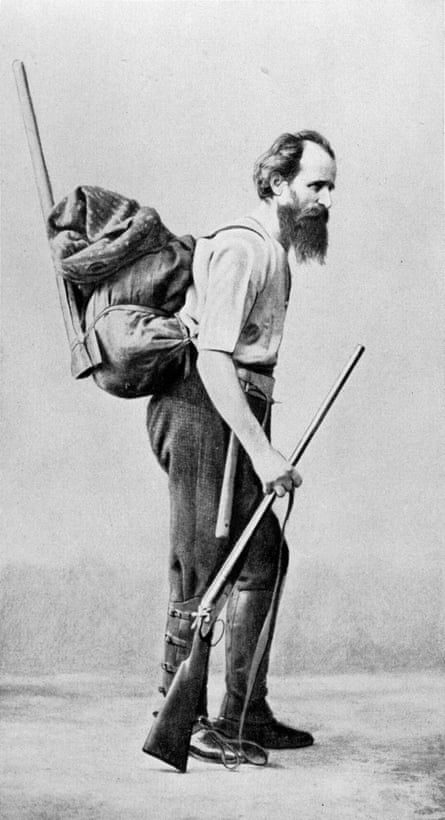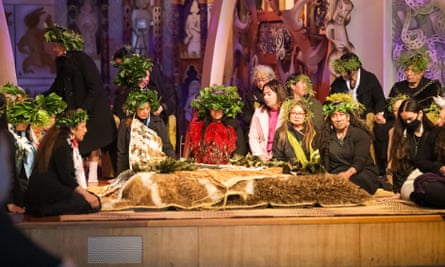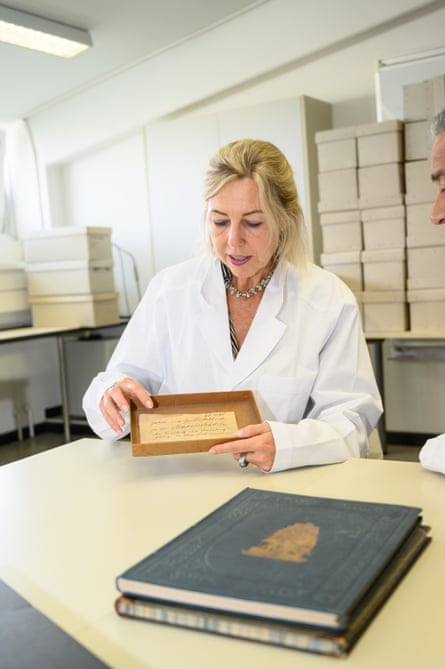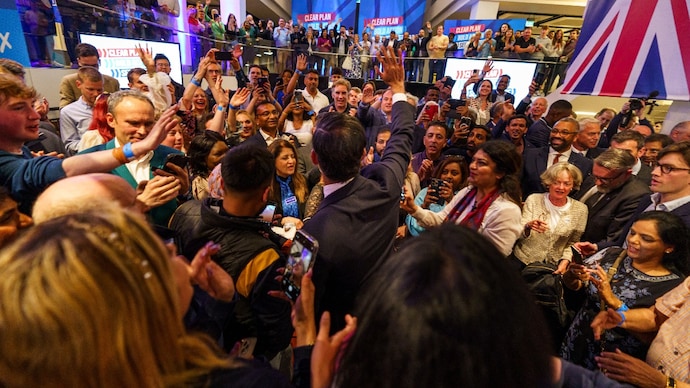‘Not just anger, but joy and integrity’: Bringing home stolen New Zealand ancestry | Maori
〇On the Wellington coastline, weeping wafted through the thick fog over the city’s harbor. The procession moved in slow, careful steps. Their heads were bowed and crowned with ferns. Sixty-four people walked through the center of the group, each carrying a beige cardboard box.
Inside these boxes, the remains of ancestors were secretly stolen from graves and kept in Vienna museums for over a century. The battle for their return took 77 years of negotiations, pleadings and diplomacy. In Sunday rituals, each ancestor was brought inside and placed at the entrance of the marae (meeting house) and gently covered with blankets and feathered cloaks. The crowd sang, cried and laughed.
“There are many different emotions: anger, contempt, rage,” says Dr. Arapata Hakiwai of Kaihaut. “However [also] Absolute joy, connection and completeness. Your ancestors have returned.”

Robbery
The story of how they were stolen took decades to fully unravel. new zealand 1877. He became involved with the indigenous Māori and Moriori, winning the trust of the Māori king Tafiao and permission to roam the land freely.
Over the years that followed, Reischek carefully sought out and monitored the host’s most sacred sites. In secret, he dug skulls, human remains, and treasures out of graves, stuffed them into rucksacks, and smuggled them back to Europe for display. Reischek was no frivolous criminal. In his diary reflecting on his time in New Zealand, he talks about the time it took to evade the hosts and how big the breach was. Maori culture.
“We went to the east coast and dug up a Maori skull… [my companion] I said if Maori found skulls in our backpacks they would kill us. I took all the skulls,” he wrote in one entry. Robbing graves is one of his most difficult tasks. Because all these places are tapu, they are sacred, and from early morning until evening no one is allowed to enter there without being noticed by the locals. I am in disbelief,” he says. “These places are sacred, and sinners will be punished with death.” All in all, Reischek received his 49 bodies and proudly sent them back to Europe for display. Despite an initial lack of interest from Austrian museums, they eventually found their way to the Natural History Museum in Vienna, along with other artifacts from a handful of other explorers.
It took years for most tribes to discover the crime, and it wasn’t until Layšek’s son began translating and publishing fragments of his diary in the 1930s that many did. Kind of agree. For Māori, ancestry is not a relic of the past. The past and the present must be seamlessly connected, always close and respected. “The word we use in the past is ‘mua,'” he says. “But Muah also means ‘ahead. As you can see, our past is really in front of us. Our ancestors are connected with us. ”
Almost immediately, the iwi (tribe) began seeking the return of their ancestors. In 1945, when a Maori battalion fought for the Allies in World War II, they tried unsuccessfully to approach the museum to bring their ancestors home. Decades of repatriation requests have been turned down or ignored.
In 2017, the museum’s stance finally began to change. When the returning team visited Vienna that year and requested their return again, Professor Sabine Eggers had just arrived there as head of the international collections. According to her, that conversation had a big impact. “I was feeling somehow,” she said. “Now I’ve been given a mission.”

Eggers began an investigation to discover the provenance of human remains and other artifacts in the collection. She assembled a team to assemble Reischek’s 1,500-page scribbled, sometimes incomprehensible journal to figure out what he did and where. “We were able to get a 1,500-page diary – with bad handwriting, bad grammar, etc. We were like, ‘OK, let’s see what he himself writes about it.’ “This is painstaking work. I can’t imagine how much effort and time it takes.” In 2020, formal repatriation requests were made again. rice field. given this time.

This week, Eggers witnessed the return of remains to families at Te Papa, New Zealand’s national museum, which heads the repatriation program. “It’s taken way too long,” she said, apologizing for the hurt it caused. It’s about doing
“I hear my ancestors screaming for their return.”
The repatriation, the largest from Austria, is one of many that the New Zealand government has been pushing. In the early 1800s, there was a rapid trade in Māori remains, especially tattoos and mummified heads, followed by ancestral remains until the 1970s. Maori and Moriori were traded as curiosities or objects of scientific interest. Today, New Zealand is at the forefront of a global effort to repatriate remains, with a government-mandated team working full-time to bring home stolen ancestors. They have successfully negotiated over 600 returns for her, but they say they still have a long way to go.
“I don’t think our ancestors rest peacefully in the glass cupboards and vaults of overseas institutions,” said Sir Phu Temara, chairman of the Repatriation Advisory Board. Hearing our ancestors cry to come back to New Zealand, knowing that they were brought back to a place to rest in peace, they could I was able to feel the satisfaction of being there.”
Deputy Repatriation Officer Te Arikirangi Mamak Ironside said: It’s not a luxury many Indigenous communities have. ”
By investing heavily in building relationships with overseas institutions that advocate for ancestral return, we hope to pave the way for other Indigenous communities to do the same.
“They see us as a glimmer of hope,” says Temara, “for the return of their people to the land where they grew up.”
there is is a growing international movement Repatriation of indigenous bodies from international museums.
Many museums built their collections believing the cultures and societies they documented were endangered, says Hakiwai. “I think this is really a problem for museums. they do not admit that [connections] it still lives in us.
“I don’t see how museums can really embark on the future unless they actually face the past and own their own past.”
https://www.theguardian.com/world/2022/oct/04/rage-but-also-joy-and-completeness-bringing-new-zealands-stolen-ancestors-home ‘Not just anger, but joy and integrity’: Bringing home stolen New Zealand ancestry | Maori


